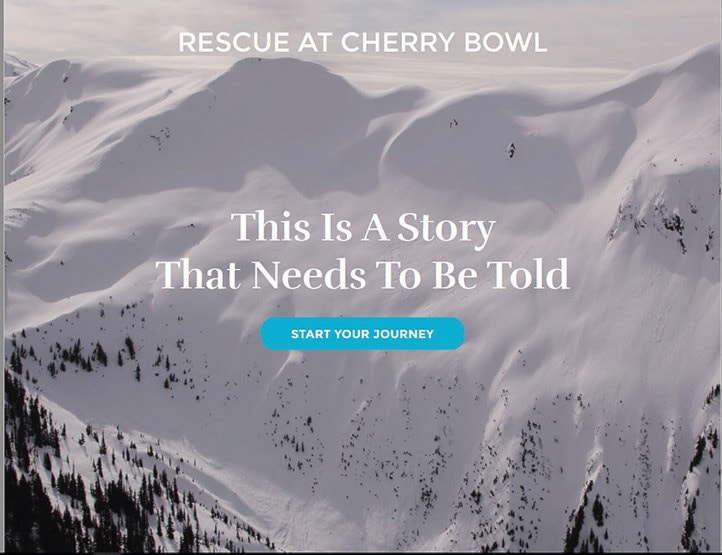The back country in winter can be a fun and exciting place; but it can also be deadly, with avalanches taking the lives of too many people.
Avalanche Canada has recently launched a multimedia site called “Rescue at Cherry Bowl”, which uses one potentially deadly avalanche to illustrate what went right, what went wrong, and how those using the back country can protect themselves and others.
In March 2013, four skiers from Whitehorse journeyed 1,200km south to spend a week skiing at Shames Mountain near Terrace. Four days later, their trip came to an abrupt—and potentially deadly—end when the quartet was enveloped by an avalanche at Cherry Bowl.
Three of the four were buried deep beneath the snow, and the fourth had lost his pack and most of his equipment. Fortunately, four skiers from Terrace were on the ridge above them, saw the avalanche, and knew lives were in danger. Even more fortunately, all four had just completed a companion rescue skills course, and knew just what to do.
“’Rescue at Cherry Bowl’ was inspired by a multi-media site called ‘Snow Fall: The Avalanche at Tunnel Creek’ that The New York Times did in 2012,” says Mary Clayton, communications director for Avalanche Canada. “It set a new bar for digital storytelling.” The site became a storytelling sensation, and won a Pulitzer Prize (http://nyti.ms/1dQ0jHo).
Clayton says that because the site detailed an avalanche and its aftermath, it quickly came to Avalanche Canada’s notice. “We were inspired by the idea of using a multimedia approach to avalanches, but had to decide what sort of story to tell.
“We heard about the Cherry Bowl story, and could tell right away that it was a special rescue. It didn’t get a lot of attention at the time, because no one died. We wanted to tell it to a wider audience. Storytelling is such an efficient way of telling these stories, and shows how powerful these real-life stories can be.”
The site describes the day the avalanche at Cherry Bowl happened as a “bluebird day”, and Clayton says that is back country lingo for a beautiful blue sky day. The site features several filmed segments examining the lead-up to the event, the avalanche itself, and its aftermath, including the effect it had on all involved.
Clayton says that all eight of the participants were happy to tell their stories. “It was a profound incident in each of their lives. Everyone talked for an hour, some for an hour-and-a-half.” Emotions bubble to the surface more than once, for survivors and rescuers alike, as they discuss the event and its impact on their lives.
It is mentioned to Clayton that the site does a good job of not casting blame on anyone, and points out that the survivors had all done their homework about weather and snow conditions and knew what they were doing in the back country. Clayton is glad that comes across.
“The Whitehorse skiers all modelled very good behaviour—they had the right gear, looked at the weather, they were all trained. But they made some human errors. The four Terrace guys knew what to stay out of.”
She stresses that anyone out in the back country needs to know how to recognize avalanche terrain. “You have to recognize when conditions are changing. Mother Nature gives lots of signs. The Whitehorse group wasn’t recognizing that Mother Nature was telling them that everything was changing quickly.”
In addition to videos, the “Rescue at Cherry Bowl” site (www.avalanche.ca/cherry-bowl) also gives information about what causes avalanches, how to recognize avalanche terrain, how to interpret different levels of avalanche warnings, and the equipment every back country traveller should have (and know how to use). In the end, however, Clayton says it comes down to training.
“Training is just so important. But even with training, things can go wrong.”
